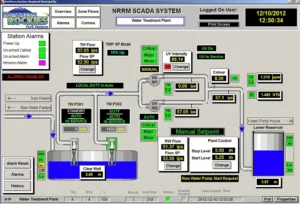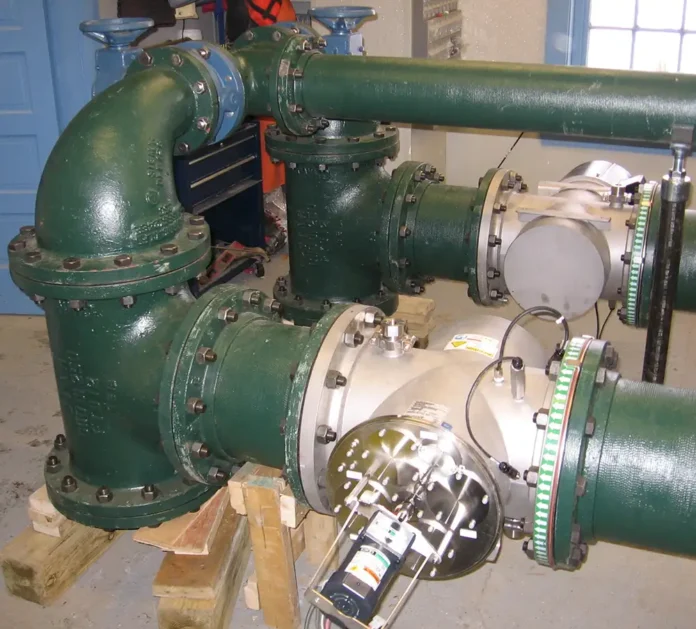By Castine A. Bernardy, Ph.D. Student, Civil and Environmental Engineering, University of New Hampshire, castine.bernardy@unh.edu; and James P. Malley Jr., Ph.D., Editor-in-Chief, UV Solutions, and Professor of Civil and Environmental Engineering, Department of Civil and Environmental Engineering, jim.malley@unh.edu
Editor’s Note: Planning for this edition of Operator’s Corner anticipated the coincidence of this UV Solutions publication with the upcoming AWWA ACE 23 in Toronto, Canada. As a result of direct calls and thanks to organizations such as AWWA, AWA, CWA, IWA and NEWWA, the Qualtrics survey was sent directly and indirectly to over 200 water utilities around the globe. The authors are grateful to the 42 utilities that responded.
Question 1. What were the ‘pros’ of adopting UV technology?
- Half of the respondents indicated UV provided the best means to meet current regulations while assuring the level of service that their customers had come to expect.
- Four utilities indicated that it was a space savings, which significantly reduced costs.
- One utility indicated that it allowed them to improve sustainability while ensuring environmental and social justice, as the new facility being brought online could provide the same level of disinfection credit as the existing treatment plants.
- Five utilities indicated that adding UV technology significantly reduced their cost for chlorination by cutting their required dose by as much as 75% in one case.
- Two utilities indicated that, due to their unique source water qualities, it was impractical to maintain any free chlorine contact time, but the use of high doses of UV light followed by a long chloramine contact time enabled them to comply with regulations.
- Four utilities indicated they added UV technology as a low-cost option to provide an additional barrier to people getting sick from microbes in the water.
- Six utilities reported that adding UV disinfection to their small pumphouses was by far the easiest way to control bacteria.
- Three utilities indicated that they now use UV disinfection for their entire Giardia disinfection credit. This switch also has significantly reduced their disinfection byproducts in the distribution system.
Question 2. What were the ‘cons’ of adopting UV technology?
- Seven utilities indicated there were no significant cons so far.
- 10 utilities indicated the operation, maintenance and required monitoring took more time than initially estimated or anticipated.
- Five utilities indicated that it was challenging to gain acceptance of the technology, both among their operation staff and with local public health and state regulators because there was no way to measure a residual.
- Two utilities anecdotally remarked that they “still wonder if it really works.”
- Half of the respondents (22) indicated that cleaning and electrical maintenance were the major cons of having UV systems.
- Five utilities indicated that once UV disinfection was added, they had to change their chlorination practices because the use of chlorine before UV to control slime caused a variety of problems.
- Two of the utilities specifically mentioned increasing amounts of brown staining (from iron) on their UV lamp sleeves and sensors made them much harder to clean.

Question 3. Describe specific experiences with the installed UV systems. If a problem was encountered, how was it solved?
- Two utilities indicated the public tours during Water Week generated many positive comments from school groups and the public in general.
- One utility indicated its board considered having UV to be innovative and much more natural and sustainable than using chemicals.
- Four utilities indicated some of the public did not like the fact that adding UV disinfection used more electricity and complained about the cost and the contributions to climate change.
- Three utilities indicated that they had a challenging time when their raw water iron levels increased since they saw “dramatic amounts” of UV system fouling. Interestingly, one utility solved this problem by adding a common dechlorination chemical – sodium metabisulfite – upstream of the UV units. The other two utilities indicated they increased cleaning frequency and “rode the problems” out.
- Four utilities indicated that their UV systems were significantly over-designed, and they did not have the ability to optimize their delivered dose, leading to more-than-needed power usage. None of these utilities indicated that changes were made to reduce this issue.
- Five utilities indicated problems with the UV system instrumentation and controls. In one case, the UV system would not communicate with the plant’s current SCADA system, so it became very costly for a specific IT consultant to design and implement an interface. In two other cases, the utilities were “very disappointed” that their UV suppliers did not provide them with the latest systems monitoring and control hardware and software, making it more difficult to demonstrate regulatory compliance in their required state reports.
- Three utilities noted that they believed climate change-related impacts on their raw water quality made it difficult to operate their UV systems efficiently. In two cases, the UVT entering the UV units dropped by 10%. One of these facilities de-rated the plant capacity and produced less water per day, and the second ran all its UV units (always including the extra one) at full power. The third utility said its pre-UV treatment processes were “overwhelmed with turbidity,” which caused the UV sensors to drop out of validated range. This facility was addressing changes upstream of the UV system to restore performance.
- UV system hardware issues were noted in six responses. In two cases, the utilities had significant problems with electronic ballast failures and eventually had to find a different manufacturer of ballasts. Four systems reported UV sleeve issues, including irregular surfaces, warping, cracking and scratching. Two of the utilities noted this was due to the high pressures the UV system received from the location being just downstream of the well pumps. Each utility responded by replacing sleeves more frequently than specified by the manufacturer, and one utility replaced sleeves annually “whether needed or not.”
- By far, the largest issues noted (by 27 of the responding utilities), referred to problems in the past five years “even post-COVID-19.” The utilities referred to lengthy delays in getting replacement parts and delays in qualified repair personnel coming to facilities to fix problems.






